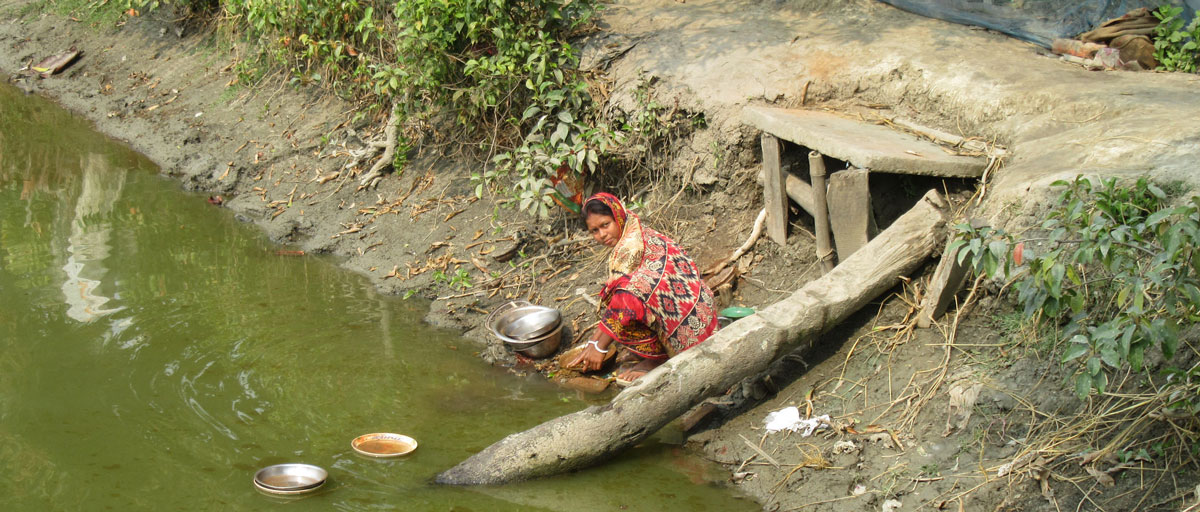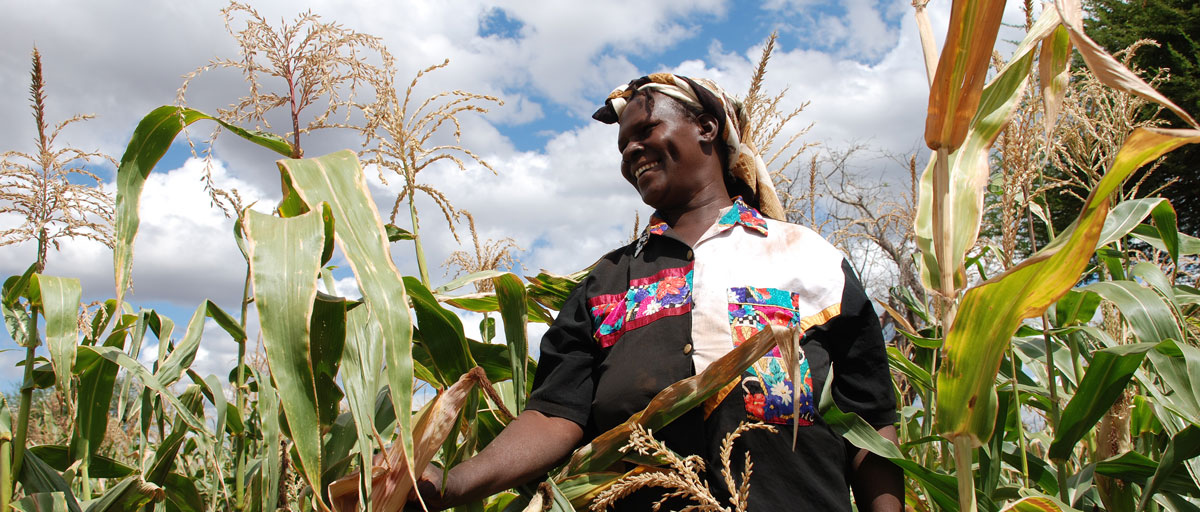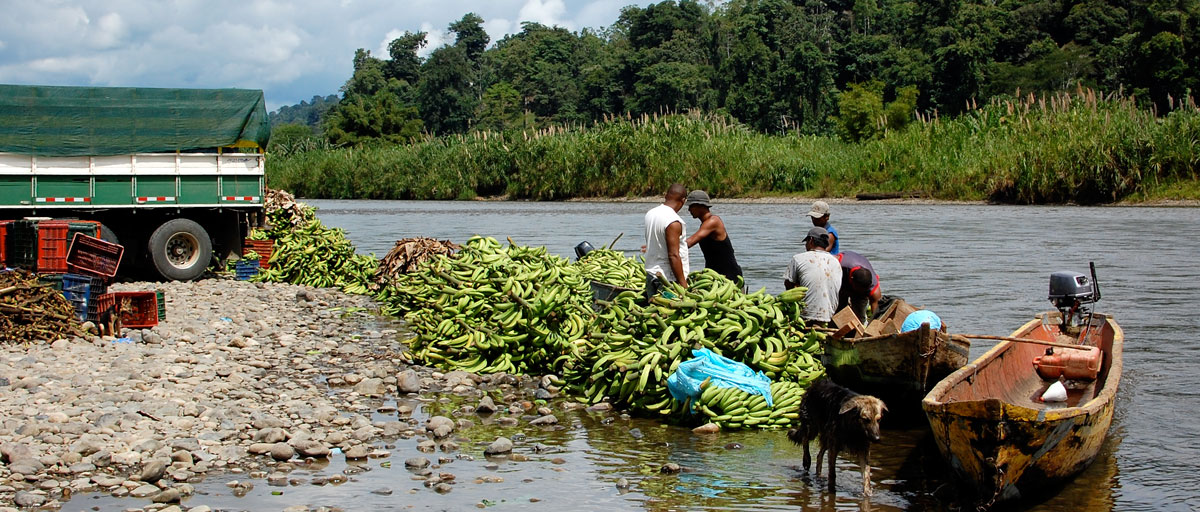Bildtext får vara max två rader text. Hela texten ska högerjusteras om den bara ska innehålla fotobyline! Photo: B. Christensen/Azote
poverty traps
Broadening the definition of a povery trap
Review study of poverty traps examines the concept’s use across disciplines, and how it is defined and applied in a rural context
- Using a social-ecological systems framework, the study looks at existing literature across different disciplines that use the traps concept
- The study also explicitly examines characteristics and mechanisms of traps in rural contexts
- The Authors find that traps share three characteristics; persistence, undesirability, and self-reinforcement; and suggest four additional criteria to account for social-ecological interactions
Goal 1 of the 17 Sustainable Development Goals states, “End poverty in all forms everywhere.”
This is no small feat.
As poverty is known to be triggered by interacting social and environmental elements, working towards Goal 1 without further degradation to our planet, is a demanding challenge to say the least.
To understand how persistent poverty and environmental factors interact, the concept of poverty traps is often used across many disciplines and in the development sphere.
As commonly defined, poverty traps are self-reinforcing mechanisms that keep individuals or groups below an economic threshold. The concept has encouraged a “Big Push” style of development aid funding, in order to overcome a given economic threshold, but the concept misses the fact that poverty also stems from additional barriers.
The concept of poverty traps neglects important insights from many years of research on poverty. This includes intergenerational, cultural, and institutional barriers to poverty alleviation and the role of inequality in perpetuating poverty.
Jamila Haider, lead author
Too many factors ignored
In a review paper published in World Development, centre researchers expand on this idea and argue that the current conceptualization of poverty traps is too narrow. Researchers Jamila Haider, Wijnand Boonstra, Garry Peterson, and Maja Schlüter’s review focuses on traps literature, with respect to sustainable development. The authors also take a focused look at poverty in rural settings, specifically the characteristics and mechanisms in these contexts.
Boonstra elaborates, “Poverty is itself and experienced as multi-dimensional, which means that along with lack of income, poverty can include other factors, such as exposure to violence or poor health. Furthermore, cross-scale interactions between multiple local factors, or between social and ecological factors, are generally not considered in poverty traps studies.”
Link to article
Request publication
Traps across the disciplines
In their review, the authors found that there has been a four-fold increase in papers published on poverty traps between 2000 and 2015. Different themes within poverty traps emerged from the different disciplines they reviewed related to sustainable development. For instance, developmental economics, rural development, and social-ecological research focuses on poverty in general, whereas the other fields often define traps more generally as persistent undesirable states. Namely, environmental science focuses on technical lock-ins, psychology tends to examine social traps, and sociology analyzes path-dependent processes.
With respect to the rural context, the authors found that “chronic poverty” is often cited. It is defined as the persistence of poverty over time and generations, which highlights the multidimensionality of poverty. As Peterson adds, “From this viewpoint, escaping a trap requires creating new feedbacks, strengthening desirable feedbacks, and breaking undesirable ones,” which also comes through in the social-ecological literature on poverty traps.
The social-ecological literature also highlights two types of traps: rigidity and gilded. Rigidity traps are inflexible and overly connected in a way that makes their social-ecological system more vulnerable to shocks. Gilded traps are when activity is maximized at the expense of diversity, which also contributes to the social-ecological system’s heightened vulnerability.
Characteristics and mechanisms of traps in rural areas
The results of the in-depth review show that traps are generally defined as a “persistent, undesirable state with reinforcing internal dynamics inhibiting an individual, household, or system to surpass a given asset threshold.” The authors found that development economics literature tends to address traps at the household level. Whereas, environmental conservation literature looks at social-ecological interactions, and frequently considers the regional scale.
In trying to determine the patterns, the authors highlight three reoccurring mechanisms of poverty traps in a rural context: self-reinforcing feedbacks, lack of natural capital, and lack of alternative livelihoods. While many studies have a narrative that “the poor stay poor,” there is little consensus on effective strategies for breaking this cycle.
Methodology
Two structured literature reviews were conducted for this study: (1) broad review of trap dynamics, and (2) trap dynamics specifically in a rural context. Both used a social-ecological systems framework, where the social and ecological interact as complex adaptive systems. This framing also assumes that: the social and ecological are interdependent, interactions can occur across time and space, and how traps can occur as a result of multiple local adaptations and interactions.
The first literature review broadly examined trap dynamics across multiple research disciplines relevant to sustainability science. Using Scientific Information Web of Knowledge, the search produced 2345 papers that were organized into six research fields: Development Economics, Rural Development, Environmental Science, Sociology, Psychology, and Social-Ecological. The two most cited papers in each field were then analyzed further.
The more in-depth review focused on traps in rural contexts, and also used Web of Knowledge. The search criteria, determined by the authors, resulted in 269 papers. Only primary data or theoretical studies were included in this review, and a diverse set of papers. Papers were then coded, and grouped into two meta-categories, development economics and environmental conservation.
Link to article
Request publication
%20poverty%20traps.jpg)
A broadened social-ecological conceptualization of trap dynamics including cross-scale interactions, path dependencies, external drivers, and social-ecological diversity, borrowed from cross-disciplinary understanding of trap dynamics. The inner circle denotes the minimal, but not sufficient conditions for defining traps, and at the core, integrating these elements is social-ecological description of traps. Click on illustration to access publication
What to do with a diversity of definitions
In summarizing the review, Schlüter says, “Conceptualizations and understandings of traps are more diverse than the common understanding of poverty traps. The limited overlap between the different conceptualizations, and lack of more integrative concepts suggests that knowledge of traps is fragmented and remains confined by disciplinary boundaries.”
One key message that comes from this review is that social and ecological, and their characteristics, interactions, and mechanisms, need to be better integrated. As Haider argues, “Accounting for the different types of conceptualizations and understandings of trap dynamics provided by a broader, multi-disciplinary literature on traps offers opportunities for synergy and creates space for interdisciplinary inquiry.”
For a better understanding of poverty traps from a social-ecological perspective , the authors suggest four dimensions to broaden its definition:
1. Scale mismatches – a mismatch of behaviour with the time or space of its effect. For example, the time lag between burning gasoline and seeing real impacts from climate change.
2. Trap dynamics can be path dependent – once on the path dependent road of poverty, it is difficult to exit
3. External factors can reinforce traps – these factors, for example having few assets or colonialism, can contribute to poverty traps
4. Lack of social-ecological diversity – few social-ecological interactions in a social-ecological system can contribute to a poverty trap. For example, a lack of diverse seeds during a drought, can impoverish a farmer.
By using these insights from different disciplines, the authors argue that it can help to better our understanding of poverty traps, and address persistent poverty with respect to sustainability.
Haider, L.J., Boonstra, W.J., Peterson, G.D. and Schlüter, M., 2018. Traps and Sustainable Development in Rural Areas: A Review. World Development, 101, pp.311-321.
Jamila Haider is a postdoctoral researcher studying how development interventions can improve human well-being in food systems without eroding biological and cultural diversity.
Wijnand Boonstra is an associate professor researching social-historical dynamics of primary resources, and how it impacts the long-term biocultural sustainability of sea- and landscapes.
Garry Peterson is a professor researching abrupt systemic change, ecological changes’ impacts people, and using futures thinking to improve navigating surprising social-ecological change.
Maja Schlüter is an associate professor whose research focuses on analysing and explaining the co-evolutionary dynamics of social-ecological system with the aim to develop social-ecological theory.










